Digital Bamboo on display
Students at ETH Zurich used innovative technology to create an extremely lightweight and filigree pavilion using bamboo. The project demonstrates the possibilities of digital fabrication combined with natural construction materials.
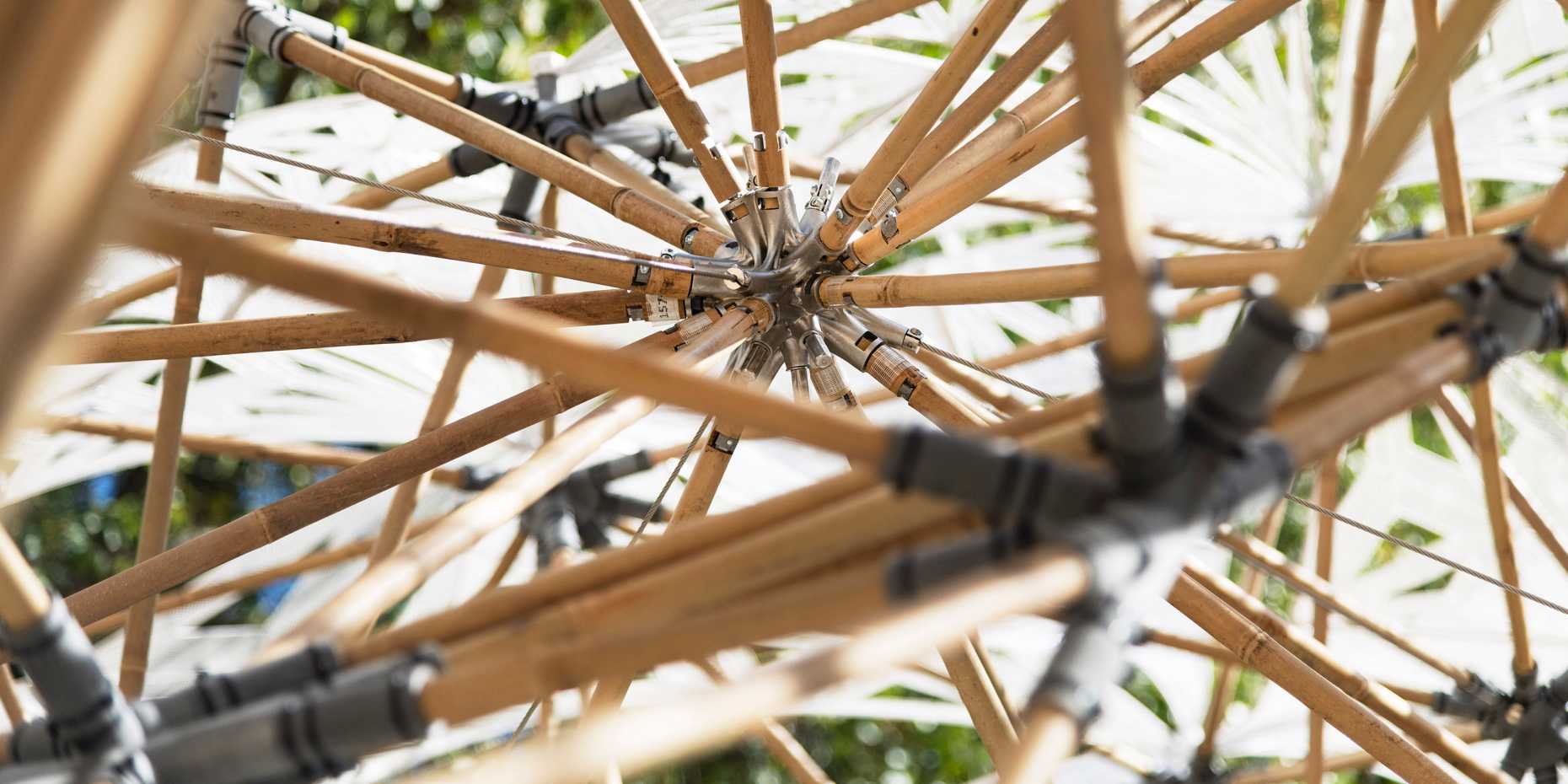
Visually reminiscent of the arch of a Gothic cathedral, but based on state-of-the-art technology – the Digital Bamboo Pavilion was designed and built by ETH Zurich students of the MAS in Architecture and Digital Fabrication (external page masdfab). Bamboo is a rapidly renewable and high-quality raw material with extraordinary properties. As a building material, it can be compared with hardwood species, but due to its hollow core, is extremely light-weight and elastic. It is for this reason that bamboo has been used for centuries in earthquake-prone areas of Asia.
The students used this long-established material to create a pavilion weighing just 200 kg. Spreading in three directions to cover a total area of more than 40 m2, its minimal supports contribute to the etherealness of the structure. This design-to-fabrication process depends on digital technologies, using purpose-made digital design tools to generate this ultralight yet complex structure.
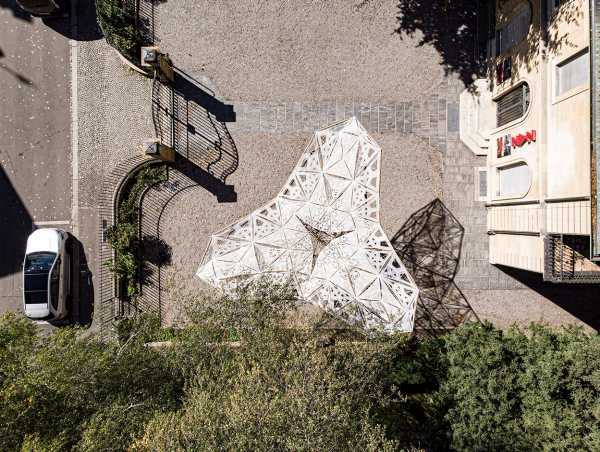
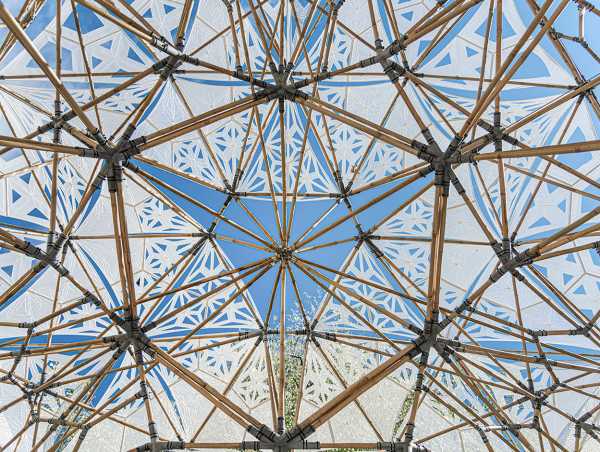
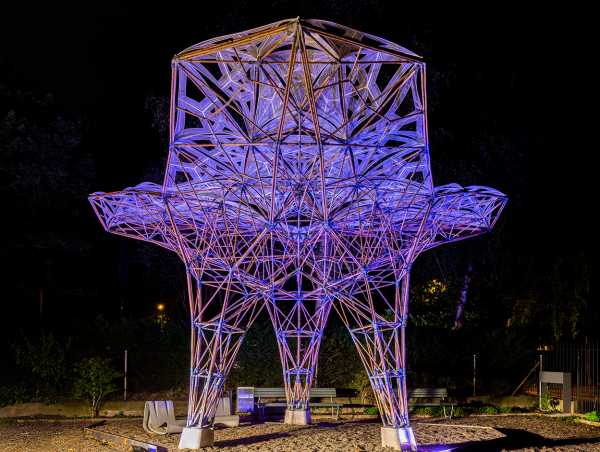
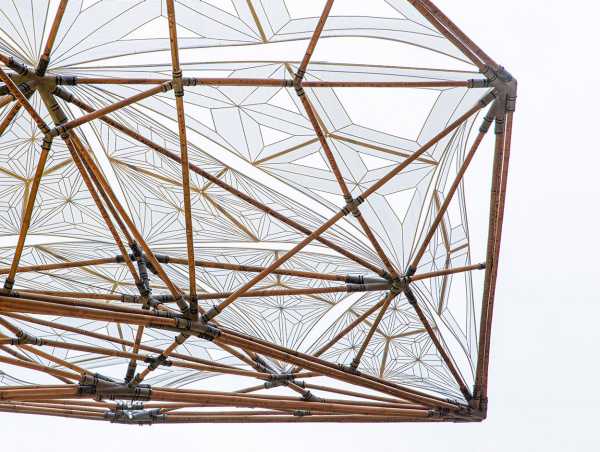
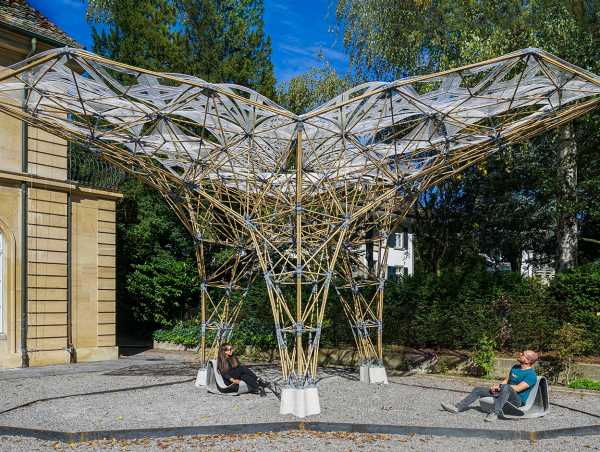
Countless intersections, connections and bamboo poles
More than 900 bamboo poles are connected through digitally designed joints and manufactured with sub-millimetre accuracy in high-strength nylon and stainless-steel using 3D printing technologies. Digital fabrication is powerfully demonstrated in this project, enabling all parts to be generated automatically and developed to meet all mechanical requirements. This included not only the complex geometry and structural specifications for each joint, but also the tolerances required for the non-standard assembly of this natural material. Added to these connections are hinge plates, cables and anchors – resulting in a total of 379 connections and a very large number of small parts.
Sustainable shading panels
The five-metre-high pavilion creates protective shade with precise and detailed textile panels that extend the intrinsic pattern of the structural elements. With this in mind, the students designed elements to be 3D printed using a recyclable, UV-resistant and malleable plastic onto a lightweight Lycra textile. 3D printing locally reinforces the base material, transforming it into bespoke resistant and flexible shading panels.
Marirena Kladeftira, doctoral student at the Chair of Digital Building Technologies, who is researching the potential of 3D-printed connections for innovative and sustainable space frame structures for architecture, explains: “The construction system developed for this project aims to reduce the logistical effort in construction, demonstrating how advantages of digital fabrication contribute to a more sustainable building culture.” Not only is the project sustainable, it also opens up a range of different possibilities of use: in view of their relatively small size, the bespoke elements can be 3D printed on location and combined with local materials in order to build high-performance structures.
This approach could thus be used wherever bamboo is available and produced in a cost-effective manner. Furthermore, the design-to-construction process developed for the bamboo pavilion could even be applied to other materials. Thanks to the modular design, the structure can be assembled and disassembled extremely quickly. The Digital Bamboo Pavilion was assembled on-site at the Zurich Architecture Centre (ZAZ) in just 48 hours in summer 2020, before being disassembled in the same short time. Though it, unfortunately, is no longer on exhibit at the ZAZ, the team hopes that it may soon go on tour including a prolonged stop at the ECC exhibition in Venice, in Marinaressa Gardens from May to October.

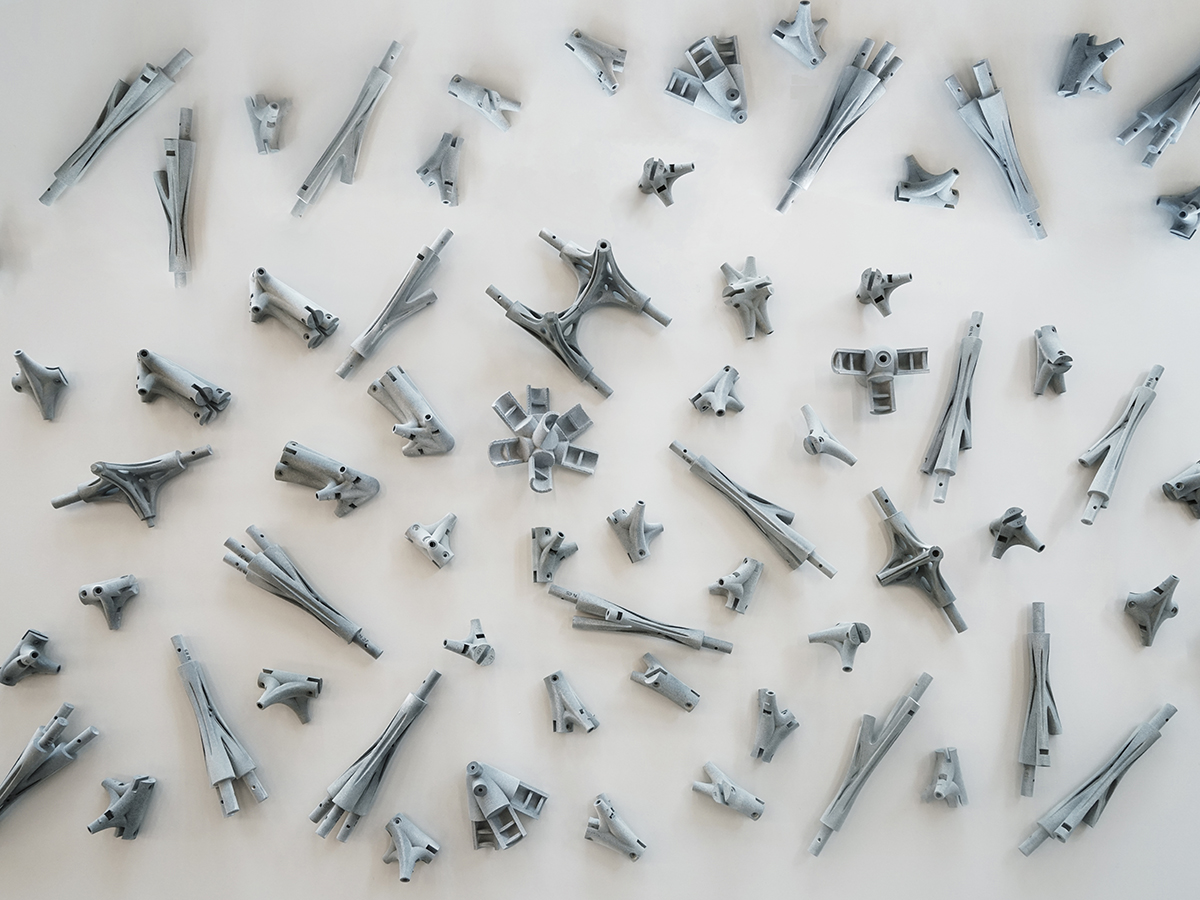
Comments
No comments yet